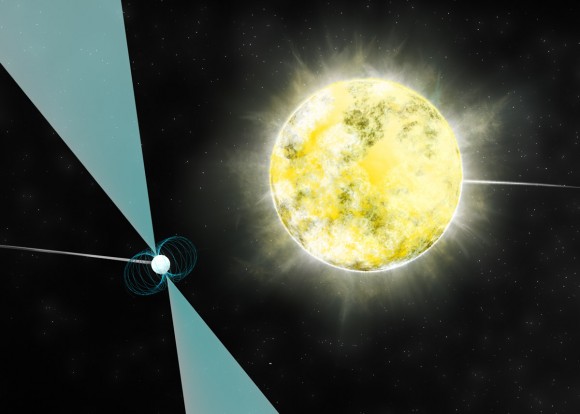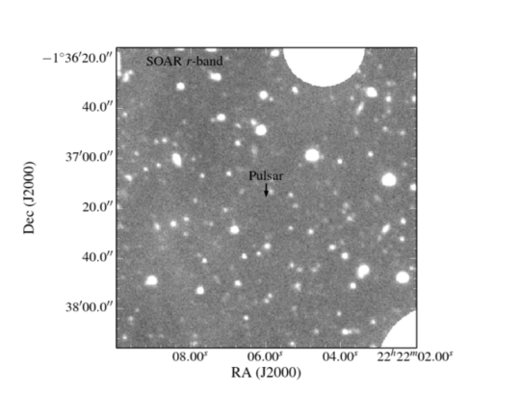
A team of researchers using the National Radio Astronomy Observatory's Green Bank Telescope and the Very Long Baseline Array (VLBA), as well as other observatories have repeated the story, detecting an object in orbit around a distant pulsar. Except this time it's the coldest, faintest white dwarf ever detected. So cool, in fact, its carbon has crystallized.
The punch line is this: with the help of a pulsar, astronomers have detected an Earth-size diamond in the sky.
"It's a really remarkable object," said lead author David Kaplan from the University of Wisconsin-Milwaukee in a press release. "These things should be out there, but because they are so dim they are very hard to find."
The story begins when Dr. Jason Boyles, then a graduate student at West Virginia University, identified a pulsar, dubbed PSR J2222-0127, 900 light-years away in the constellation Aquarius.
When the core of a massive star runs out of energy, it collapses to form an incredibly dense neutron star or black hole. Bring a teaspoon of neutron star to Earth and it would outweigh Mount Everest at about a billion tons. A pulsar is simply a spinning neutron star.
But as a pulsar spins, lighthouse-like beams of radio waves stream from the poles of its powerful magnetic field. If they sweep past the Earth, they'll give rise to blips of radio waves, so regular that you could set your watch by them. But if the pulsar carries a companion in tow, the tiny gravitational tugs can offset that timing slightly.
The first observations of PSR J2222-0137 identified that it was spinning more than 30 times each second. It was then observed over a two-year period with the VLBA. By applying Einstein's theory of relativity - which predicts that light slows in the presence of a gravitational field - the researchers studied how the gravity of the companion warped space, causing delays in the radio signal as the pulsar passed behind it.

But the timing variations made the neutron star scenario unlikely. The orbits were too orderly for a second supernova to have taken place. So knowing the typical brightness of a white dwarf and its distance, astronomers initially thought they would be able to detect the elusive companion in optical and infrared light.
However, neither the Southern Astrophysical Research telescope in Chile nor the 10-meter Keck telescope in Hawaii was able to detect it.
"Our final image should show us a companion 100 times fainter than any other white dwarf orbiting a neutron star and about 10 times fainter than any known white dwarf, but we don't see a thing," said coauthor Bart Dunlap, a graduate student at the University of North Carolina. "If there's a white dwarf there, and there almost certainly is, it must be extremely cold."
The research team calculated that the white dwarf would be no more than 3,000 degrees Kelvin. At such a low temperature, the collapsed star would be largely crystallized carbon, similar to diamond.
The paper has been accepted for publication in the Astrophysical Journal and may be viewed here.



Reader Comments
to our Newsletter